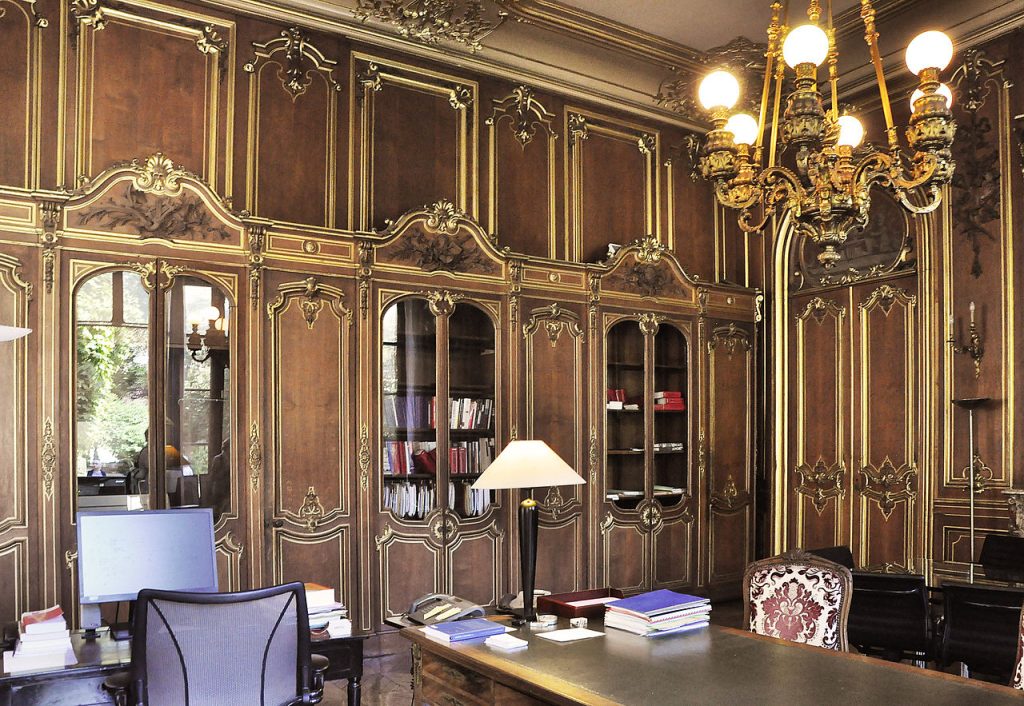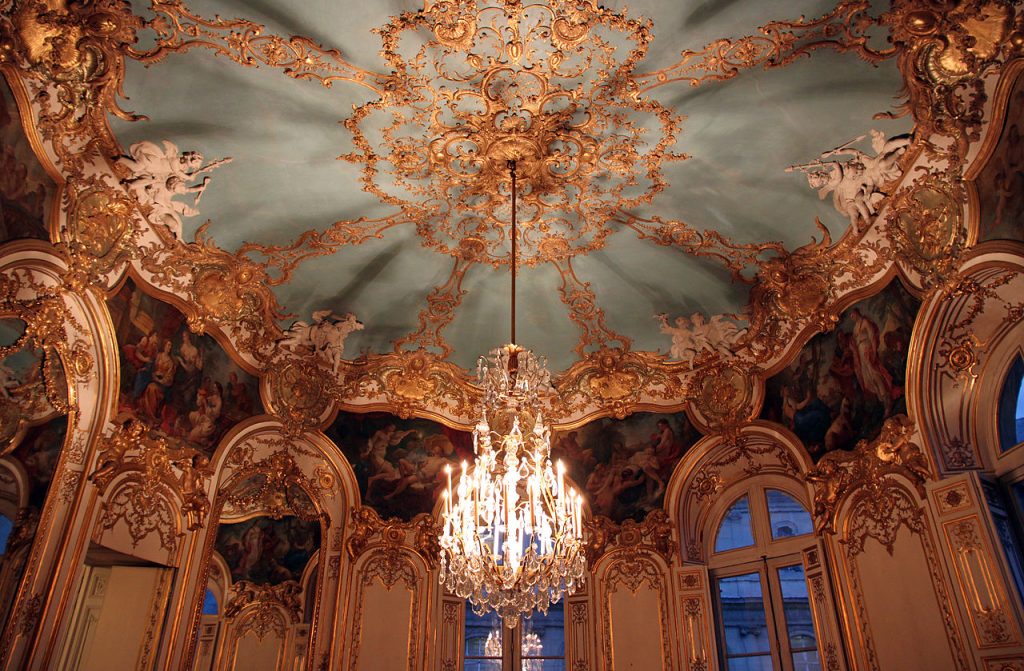Chapter 10.11: Rococo and Neoclassicism: Overview
In 18th-century Europe, the Rococo style became prevalent in interior design, painting, sculpture, and the decorative arts. A reaction to the rigidity of Baroque style, the frivolous and playful Rococo first manifested itself with interior design and decorative work. In French, the word salon simply means living room or parlor, and Rococo salons refer to central rooms that are designed in the Rococo style. In addition, the notion of the ‘salon’ is an Enlightenment-era ideal that transformed the living room into the central space for aristocracy to entertain guests and engage in intellectual conversation. The idea that one’s architectural surroundings should encourage a way of life or reflect one’s values was the philosophy of the time.
The Rococo interior reached its height in the total art work of the salon. Rococo salons are characterized by their elaborate detail, intricate patterns, serpentine design work, asymmetry, and a predisposition to lighter, pastel, and gold-based color palettes.
As another means of reflecting status, furniture rose to new heights during the Rococo period, emphasizing the lighthearted frivolity that was prized by the style. Furniture design became physically lighter so as to be easily moved around for gatherings, and many specialized pieces came to prominence, such as the fauteuil chair, the voyeuse chair, and the berger et gondola. Furniture in the Rococo period was freestanding, as opposed to wall-based, in order to accentuate the lighthearted and versatile atmosphere that was desired by the aristocracy. Mahogany became the most widely used medium due to its strength, and mirrors also became increasingly popular.

Rococo salons often employed the use of asymmetry in design, which was termed contraste. Interior ornament included the use of sculpted forms on ceilings and walls, often somewhat abstract or employing leafy or shell-like textures. Two excellent examples of French Rococo are the Salon de Monsieur le Prince in the Petit Château at Chantilly, decorated by Jean Aubert; and the salons in the Hotel Soubise, Paris, by Germain Boffrand. Both of these salons exhibit typical Rococo style with walls, ceilings, and molding decorated with delicate interlacings of curves based on the fundamental shapes of the ‘S,’ as well as with shell forms and other natural shapes.

In France, the style began to decline by the 1750s. Criticized for its triviality and excess in ornament, Rococo style had already become more austere by the 1760s, as Neoclassicism began to take over as the dominant style in France and the rest of Europe.
Media Attributions
- Figure 1. Bureau Danton de l’Hôtel de Bourvallais: This example of a Rococo salon exemplifies the serpentine design work and heavy use of gold that were both typical of the Rococo style (Image source: Moonik, Wikimedia Commons) is licensed under a CC BY-SA (Attribution ShareAlike) license
- Figure 2. Salon de la Princesse: A Rococo interior from the Hotel de Soubise, Paris that demonstrates highly elaborate ceiling work (Image source: NonOmnisMoriar, Wikimedia Commons) is licensed under a CC BY-SA (Attribution ShareAlike) license
Candela Citations
- Boundless Art History: Rococo. Provided by: Lumen Learning. Retrieved from: https://www.collegesidekick.com/study-guides/boundless-arthistory/rococo. License: CC BY-SA: Attribution-ShareAlike

